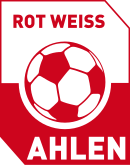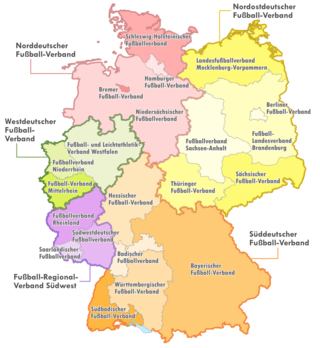
The Oberliga is the fifth tier of the German football league system. Before the introduction of the 3. Liga in 2008, it was the fourth tier. At the end of the 2011–12 season the number of Oberligas was increased from eleven to fourteen.
The German football league system, or league pyramid, refers to the hierarchically interconnected league system for association football in Germany that in the 2016–17 season consisted of 2,235 leagues in up to 13 levels having 31,645 teams, in which all divisions are bound together by the principle of promotion and relegation. The top three professional levels contain one division each. Below this, the semi-professional and amateur levels have progressively more parallel divisions, which each cover progressively smaller geographic areas. Teams that finish at the top of their division at the end of each season can rise higher in the pyramid, while those that finish at the bottom find themselves sinking further down. Therefore, in theory, it is possible for even the lowest local amateur club to rise to the top of the system and become German football champions one day. The number of teams promoted and relegated between the divisions varies, and promotion to the upper levels of the pyramid is usually contingent on meeting additional criteria, especially concerning appropriate facilities and finances.
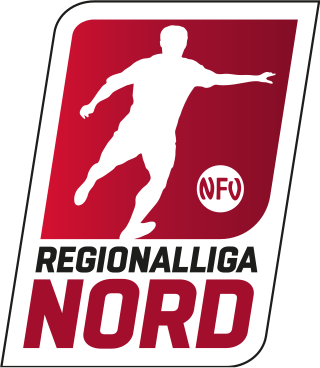
The Regionalliga Nord is the fourth tier of the German football league system in the states of Lower Saxony, Schleswig-Holstein, Bremen and Hamburg. It is one of five leagues at this level, together with the Regionalliga Bayern, Regionalliga Nordost, Regionalliga Südwest and the Regionalliga West. Until the introduction of the 3. Liga in 2008 it was the third tier.
The Verbandsliga Saarland is currently the seventh tier of the German football league system in the German federated state of Saarland. Until the introduction of the Saarlandliga in 2009 it was the sixth tier, until the introduction of the 3. Liga in 2008 it was the fifth tier of the league system, until the introduction of the Regionalligas in 1994 the fourth tier.

The 2. Bundesliga Nord was the second-highest level of the West German football league system in the north of West Germany from its introduction in 1974 until the formation of the single-division 2. Bundesliga in 1981. It covered the northern states of North Rhine-Westphalia, Lower Saxony, Bremen, Hamburg, Schleswig-Holstein and the city of West Berlin.

The Regionalliga West was the second-highest level of the German football league system in the west of Germany from 1963 until the formation of the 2. Bundesliga in 1974. It covered the state of Nordrhein-Westfalen, the most populous state of Germany.
The Regionalliga West/Südwest was the third tier of the German football league system in the states of Saarland, Rheinland-Pfalz and Nordrhein-Westfalen from 1994 to 2000.

The Regionalliga Nordost is the fourth tier of German football in the states of Berlin, Brandenburg, Mecklenburg-Western Pomerania, Saxony-Anhalt, Saxony and Thuringia. These comprise the states of former East Germany as well as West Berlin.

The 2. Oberliga West was the second-highest level of the German football league system in the west of Germany from 1949 until the formation of the Bundesliga in 1963. It covered the state of North Rhine-Westphalia, the most populous state of Germany.
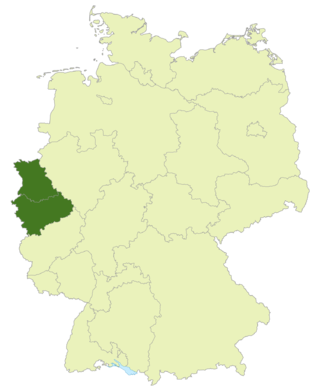
The Oberliga Nordrhein was the highest Football League in the region of Nordrhein which is part of the state of North Rhine-Westphalia from 1978 to 2008. In its last season, it was one of nine Oberligas in German football, the 4th tier of the German football league system. In 2008, it was replaced by the NRW-Liga, a new statewide league.
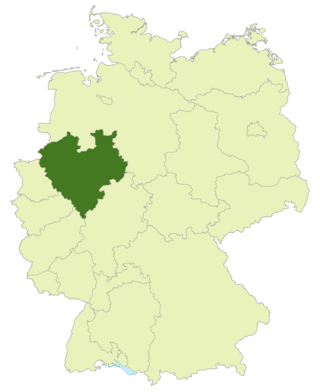
The Oberliga Westfalen is the highest level football league in the region of Westphalia, which is part of the state of North Rhine-Westphalia. The league existed from 1978 to 2008, but was then replaced by the NRW-Liga, a new statewide league. With the reform of the league system in 2012, which reduced the Regionalliga West to clubs from North Rhine-Westphalia only and disbanded the NRW-Liga below it, the Oberliga Westfalen was reintroduced as the highest tier in the region and the fifth level overall in Germany. It is one of fourteen Oberligas in German football, the fifth tier of the German football league system.

The Oberliga Niederrhein is a German amateur football division administered by the Football Association of the Lower Rhine, one of the 21 German state football associations. Being the top flight of the Lower Rhine state association, the Oberliga is currently a level 5 division of the German football league system.

The Westfalenliga is the second highest amateur football league in the region of Westphalia which is part of the state of North Rhine-Westphalia and the sixth tier of the German football league system. It operates in two groups which run parallel below the Oberliga Westfalen. Until the introduction of the 3. Liga in 2008 it was the fifth tier of the league system, until the introduction of the Regionalligas in 1994 the fourth tier.
The German amateur football championship was a national football competition in Germany organized by the German Football Association and in existence from 1950 to 1998.
The 1999–2000 Regionalliga was the sixth season of the Regionalliga as the third tier of German football. It was also the last season to be competed in four divisions. Teams were not only competing for promotion to the 2. Bundesliga, but also to qualify for the new two-division Regionalliga.
The 1994–95 Regionalliga season was the first year of the Regionalliga as the third tier of German football. There were four regional sections, Nord, Nordost, West-Südwest and Süd, each with eighteen teams. Most teams qualified from the Oberliga, which dropped to become a fourth-tier league, while five teams were relegated from the previous year's 2. Bundesliga. In the Nord section, four teams were promoted from the formerly fourth-tier Verbandsliga.
The 2015–16 Regionalliga was the eighth season of the Regionalliga, the fourth under the new format, as the fourth tier of the German football league system. The champions of Regionalliga Nord – SV Werder Bremen II, the champions of the Regionalliga Nordost – 1. FC Magdeburg, and the champions of Regionalliga Bayern – Würzburger Kickers were promoted to the 3. Liga. Borussia Dortmund II, SpVgg Unterhaching and SSV Jahn Regensburg were relegated from 3. Liga.
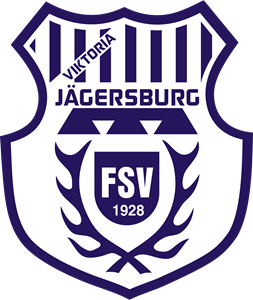
FSV Jägersburg is a German association football club from the Jägersburg suburb of Homburg, Saarland.
The 1974–75 season of the Oberliga was the inaugural season of the Oberliga as a tier-three league. The Oberligas, then as tier-one leagues, had been disestablished after the 1962–63 season, when the Bundesliga was introduced.
